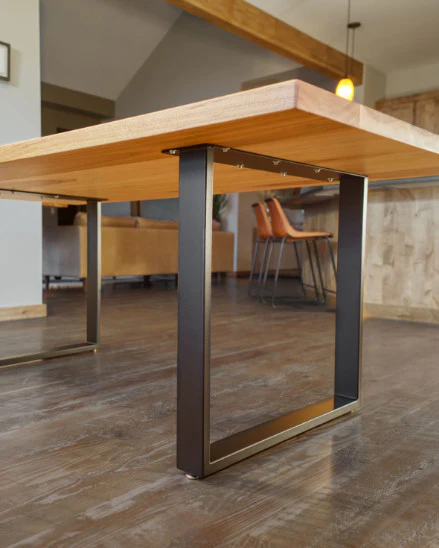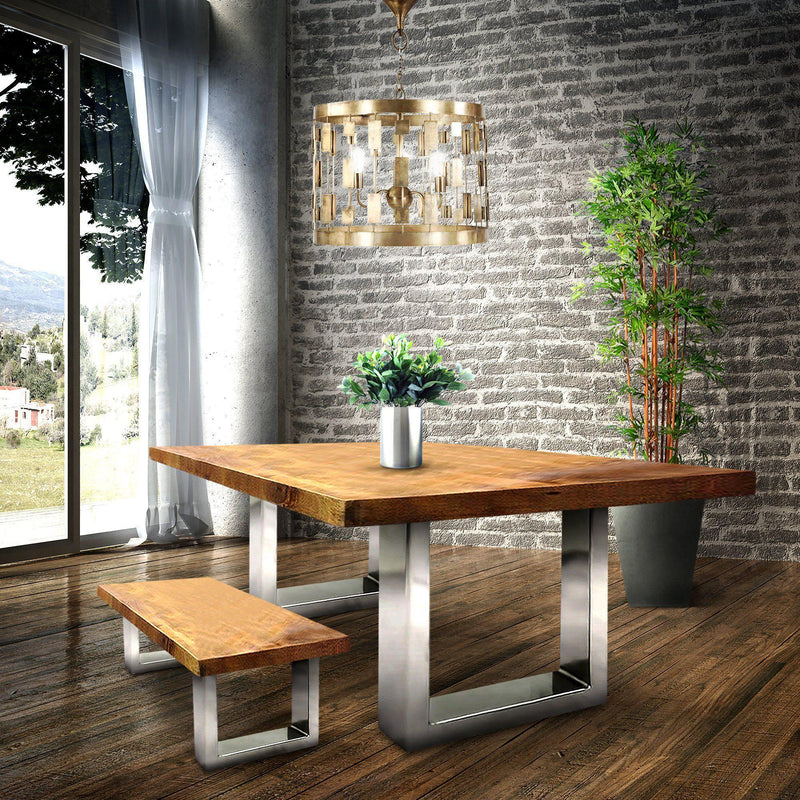Enhance Your Dining Room with Unique and Modern Dining Room Table Legs
From Traditional to Modern: Find the Ideal Dining Area Table Legs for Your Style
The option of dining-room table legs plays a pivotal function in defining the total character of your room, bridging the space between conventional workmanship and modern-day aesthetics. While timeless layouts such as cabriole and turned legs stimulate a feeling of classic class, modern styles like barrette and geometric choices offer an opportunity for striking aesthetic interest. Examining the appropriate equilibrium between these designs requires a nuanced understanding of your existing décor and personal taste. As you think about these aspects, the question stays: how can you flawlessly integrate these diverse leg designs to develop a harmonious dining experience?
Understanding Table Leg Styles
The variety of eating room table leg designs can considerably influence both the aesthetic appeals and performance of the space. Each leg design adds distinct visual elements and sensible features, satisfying varied layout choices and use requirements. Understanding these designs is vital for choosing the ideal dining table that straightens with your overall interior decoration vision.
As an example, conical legs provide a tidy, timeless appearance that can improve a space's beauty, while stand bases give security and make best use of legroom, making them optimal for smaller sized spaces. Hairpin legs, a hallmark of mid-century modern-day style, introduce an industrial style, enabling an airy, open feeling. Trestle legs evoke rustic appeal, giving robust support and a sense of eternity.
Wooden legs can bring heat and appearance, whereas steel alternatives frequently communicate a smooth, modern ambiance. Inevitably, understanding table leg designs is vital for developing a cohesive dining area that shows individual design while ensuring practicality and comfort.
Standard Table Leg Options
When picking dining room table legs, conventional choices usually embody timeless beauty and craftsmanship. These styles show an abundant heritage and a dedication to top quality, making them ideal for those who appreciate classic aesthetic appeals.
Among one of the most famous typical leg designs is the cabriole leg, identified by its elegant bent form. This design typically includes ornamental carvings and is most typically discovered in Queen Anne and Chippendale furniture. Another popular option is the transformed leg, which flaunts a collection of smooth, rounded shapes that offer a traditional look while maintaining security.
Additionally, the straight leg, while straightforward, provides a unadorned and durable structure that can mix flawlessly with a selection of tabletop designs. For those drawn to ornate detailing, claw-and-ball feet legs stimulate a feeling of splendour and can work as a stunning centerpiece in any kind of dining space.
Last but not least, stand bases, although not strictly legs, provide a different standard option that permits adequate legroom and can be magnificently carved. Each of these typical leg designs adds to the total atmosphere of a dining-room, marrying feature with aesthetic allure.

Modern Table Leg Layouts
Modern table leg styles offer a varied variety of styles that stress cutting-edge materials and tidy lines. These designs often focus on functionality while working as striking focal factors within a dining you could try this out room. Minimalist looks are prevalent, with legs crafted from products such as steel, glass, and engineered wood, which add to a contemporary and airy feeling.
One popular style is the barrette leg, characterized by its slender, conical framework that offers security without frustrating the tabletop (dining room table legs). This style is usually found in mid-century contemporary furnishings and can easily complement various table forms. One more fad is using geometric shapes, where legs may tackle angular or unbalanced types, including aesthetic passion and a touch of artistry

Mixing Designs for Special Areas
Typically, house owners seek to create one-of-a-kind eating areas that reflect their personal design by blending various layout components. This technique permits the incorporation of varied looks, leading to a harmonious yet distinct atmosphere. Pairing a rustic wood table with smooth, modern-day steel legs can create a distinctive contrast that boosts the space's overall charm.
Additionally, integrating vintage table legs with modern tabletops can evoke a feeling of history while keeping a contemporary perceptiveness. Such combinations not just showcase specific taste yet also urge creativity, permitting property owners to curate a room that feels both individual and welcoming.
Color plays a crucial function in this mixing process; picking table legs that complement or contrast with the existing color design can improve aesthetic interest. Whitewashed legs can soften the daring of a dark table surface, producing a well balanced visual.
Tips for Choosing the Right Legs
Choosing the right table legs is crucial for accomplishing both capability and visual appeal in your dining area. Begin by taking into consideration the overall style of your space. Standard settings benefit from legs that feature complex makings or turned designs, while contemporary areas might ask for streamlined, minimalist styles.
Next, evaluate the elevation and security of the legs. dining room table legs. Typical dining tables range between 28 to 30 inches in height, so guarantee the legs match this dimension for convenience. Furthermore, robust materials, such as hardwood or metal, can enhance stability and longevity
Evaluate the leg shape as well-- options include straight, tapered, or pedestal layouts. Straight legs provide a classic appearance, while conical legs can add a touch of elegance. Pedestal bases provide enough legroom and are perfect for smaller spaces.
Conclusion
In summary, selecting the perfect dining room table legs requires mindful factor to consider of both typical and modern-day designs. Standard choices such as cabriole and turned legs offer classic style, while contemporary styles like hairpin and visit the website geometric forms supply a contemporary touch. By harmonizing leg design, elevation, and material with the overall décor, a natural and welcoming atmosphere check out here can be achieved. Inevitably, the selected table legs should mirror the preferred aesthetic, boosting the dining experience within the space.
The variety of eating room table leg designs can considerably affect both the aesthetic appeals and functionality of the area. Ultimately, comprehending table leg designs is vital for developing a natural dining location that reflects personal style while ensuring functionality and convenience.One of the most renowned typical leg styles is the cabriole leg, defined by its elegant curved shape. Straight legs supply a classic appearance, while conical legs can add a touch of sophistication.In recap, selecting the optimal dining area table legs needs careful consideration of both contemporary and typical styles.